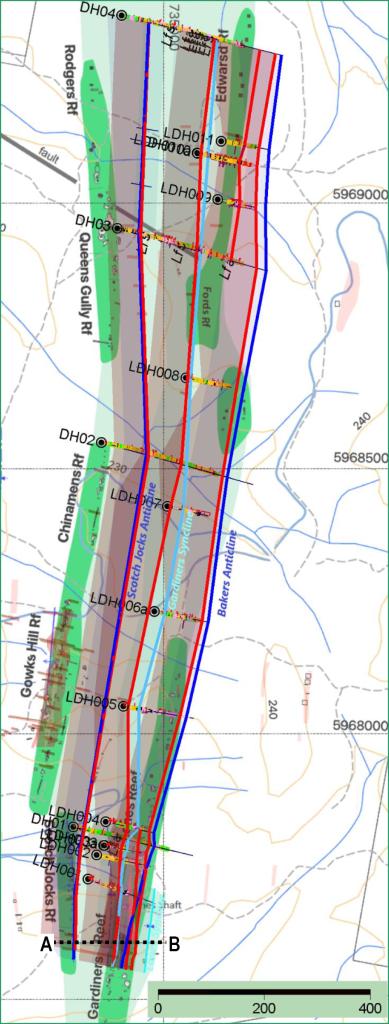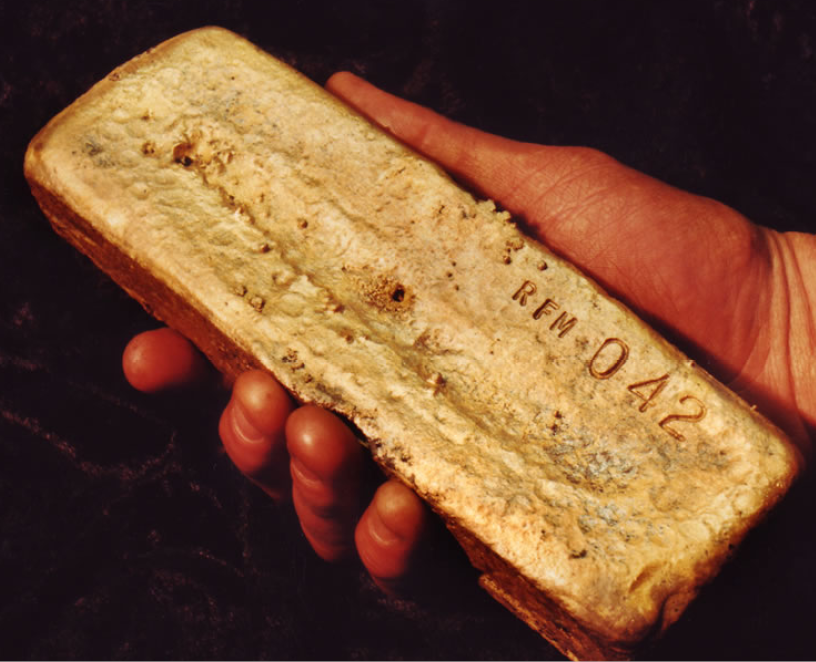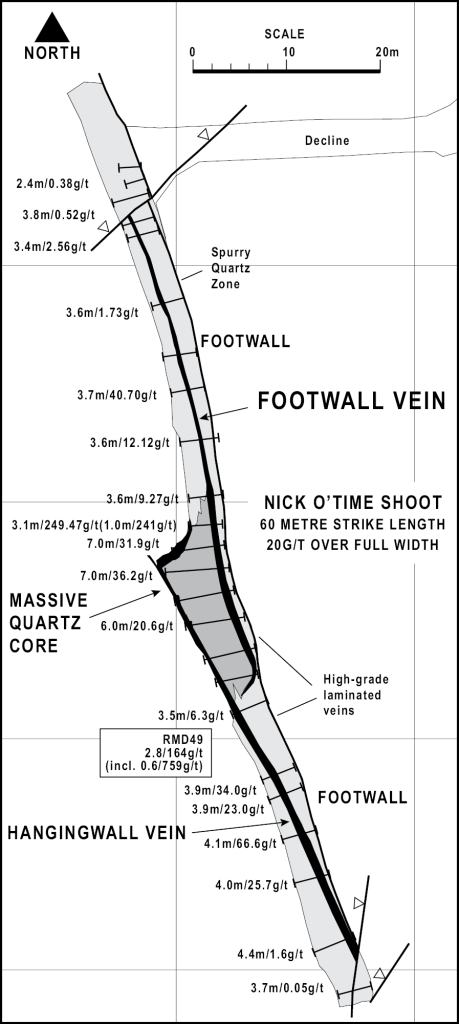2022 Proof of Concept Diamond Drilling
WGL successfully completed a circa 3,317-metre diamond drilling campaign centred on Lane’s Corridor.
Twelve holes, LDH 001 to 011, were drilled in the central group of auriferous reef clusters at flat angles circa azimuth 30° with downhole lengths of 120-150 metres.
Four holes, DH 001 to 004 were drilled at azimuth angles of 51° with downhole extents of about 400 metres.
For all 16 diamond drill holes, the drill core has been:
- logged (interpretation continuing),
- subject to magnetic susceptibility measurements.
The drill core is being subjected to further testing and review comprising:
- a follow-up review of geological structural features as detailed interpretations of all results are completed and will be incorporated into an updated 3-D model,
- handheld X-ray fluorescence (XRF) measurements to test for any anomalous geochemical features in the core, and
- geological structural logging.
Core logging
Interpretation from the core logging has established the structural setting of Scotch Jock’s, Gardiner’s, and Baker’s anticlines for a strike length of 1.75 km.
Noting that Gardiner’s, Baker’s and Lane’s Reefs are north plunging from the southern end of Lane’s Corridor whilst the plunge of the reefs in the north of Lane’s Corridor is more difficult to determine.
Modern Exploration Defines Targets
The company’s 2022 diamond drilling campaign has successfully identified structures at Wedderburn that are auriferous and contain pathfinder minerals.
Further exploration targets are anticipated to be delineated by a suite of exploration tools such as interpretation of diamond core logging and geophysics.
Specifically, modern magnetics and conductivity will be used to trace the presence of gold-bearing “dilation zones” within the whole of the EL.

Figure 6: Geographic extent of Lane’s Corridor drilling and digital 3D modelling.
Structures vs Grade
Victoria’s recorded gold production since 1851 is greater than 80 million ounces, or 1.5% of all the world’s gold from just 0.03% of the world’s land area.
Geological Survey of Victoria estimates the state’s goldfield geology is two orders of magnitude (100x) richer in gold than the global average, and that recent successful mines like Fosterville and Costerfield show the state has more than 48 million ounces of gold still to be found and mined.
Modern exploration techniques including magnetics, conductivity and other geophysics give an added impetus to exploration and mineralisation research.
Science combined with conviction, persistence and patience are the keys to unlocking Victoria’s golden opportunities – Fosterville has shown the prize is worth the risk. One deposit has increased Victoria’s share of Australian gold production from 1.5% to 5.6%.
Grade estimation
Victoria’s often nuggety, coarse gold makes new exploration technologies like those being employed by WGL especally important.
For example, during 1989, Western Mining Corporation carried out an evaluation of the Poverty Reef at Tarnagulla. A 970-tonne bulk sample yielded a head grade of 7 g/t. Diamond drill core assays from both surface (NQ) and underground (BQ) drilling indicated a low grade in the 1 g/t to 3 g/t range. As a result, Western Mining chose to downgrade its exploration at Tarnagulla, put its operations in care and maintenance and release its subcontractors.
In 1994 Reef Mining discovered the Nick O’Time structure by surface diamond drilling on a 50-metre grid pattern along an interpreted south plunging zone south of the Poverty Reef workings. Grade estimates during exploration ranged from an original estimate of up to 10 g/t to between 5 g/t and >20 g/t.
The figure at right shows the difficulty of estimating grade in this setting with face-sample assays wildly fluctuating from an extraordinary 759 g/t to 0.05 g/t.
Reef Mining NL mined the Nick O’ Time Shoot for a yield of 57,000 tonnes and 53,000 ounces of gold at a grade of 29.1 g/t.

Figure: Reef Mining NL The Nick O’ Time Shoot produced very high-grade ore despite the low grade indicated by Western Mining’s initial drilling.

Figure: Reef Mining NL mining stope, Poverty Reef.
